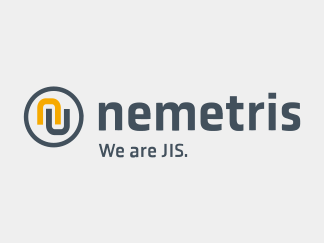JIS in a VUCA world
The only thing that is certain is that we will have to live with uncertainties in the future. This is particularly true for the suppliers of automotive OEMs. They are expected to be even more flexible in the future than is already the case. To adapt to this, two things are important: the ability to make good predictions and agility.

According to the Federal Motor Transport Authority, 198,258 passenger cars were newly registered in November 2021. This is a drop of 31.7 percent compared to November 2020. In the period from January to November, 8.1 percent fewer passenger cars were newly registered in 2021 than in 2020. What must be particularly frustrating about this for OEMs is that it is not due to demand. Customers want to buy cars. But manufacturers can only produce small quantities because they currently have a lack of microchips in particular. Of course, sooner or later enough semiconductors will be available again. But the automotive industry – like all other sectors – should urgently prepare for situations like the current chip shortage. It is not without reason that the acronym VUCA has been used for some time to characterize our world. Indeed, circumstances are volatile (Volatility) and uncertain (Uncertainty), complex (Complexity) and ambiguous (Ambiguity).
Fluctuations in the procurement and sales markets do not only affect manufacturers. They are even often able to pass on a part of the resulting challenges to their suppliers by making the cooperation more and more flexible. And so contract terms become shorter, the range of agreed purchase quantities increases and the JIT / JIS principle is expanded. Specifically, that means: Perhaps no parts will be needed this week because production has come to a complete standstill. But then you might have to work 24/7 for the next week ...
In order to meet such a flexibility requirement and at the same time act economically, suppliers should take care of two aspects: their ability to forecast and their agility.
Just because the world is volatile and uncertain, complex and ambiguous does not mean that it can no longer be understood. However, it is more challenging to gain transparency and anticipate future developments. The rapidly growing volume of data and powerful technologies help here. With innovative analytics approaches, it is not only possible to use key figures to tell what happened in the past (descriptive analytics). It is also possible to gain insights into why something happened (diagnostic analytics), what will happen (predictive analytics) and how best to act (prescriptive analytics). This enables suppliers to adjust their own resources and procurement at an early stage.
Suppliers who provide their parts just in sequence absolutely need a JIS system that receives and processes the delivery schedules via an EDI interface. Often it is also necessary that they manufacture close to the OEM. This means that suppliers keep opening locations at the beginning of a collaboration – the guaranteed term is getting shorter and shorter. This raises the question of to what extent the investment in a corresponding JIS solution is worthwhile. An on-premises system that causes high investment costs (capex) has to be in use for a certain period of time in order to achieve a positive ROI. For a JIS solution that is obtained from the cloud as software as a service, on the other hand, there are only running costs (Opex). And only as long as it is actually used. Another advantage is that a cloud-based solution can be deployed quickly. Concerns about a lack of latency, performance and stability as well as insufficient data security are usually unfounded. In truth, cloud applications almost outperform their on-premises counterparts.
Obtaining a JIS solution in the SaaS model makes suppliers more agile when it comes to temporary cooperation with an OEM. However, deployment in itself does not help to react agilely to fluctuating demand. To do this, the software must meet some functional requirements:
The software should be able to evaluate delivery schedules – also to identify trends
Data exchange with other systems should be possible and forecasts should be able to be given as negotiation options to compare OEM contracts with actual purchase quantities
The software should be easy to integrate into other systems in order to be able to automate the entire process as comprehensively as possible and make it more flexible
Benchmark with the agreed terms of the contract - criteria are agreed, such as keeping employees or consumables on hand
The software should be easy to use and it should be possible to secure processes so that employees can be organized more flexibly
The software provider should have a coordinated 24/7 support concept so that problems can be dealt with quickly
The software provider should make their know-how available at an early stage in the project in order to be able to develop meaningful, practicable and cost-effective concepts and solutions – it is best to start this already while an offer is being negotiated with an OEM


